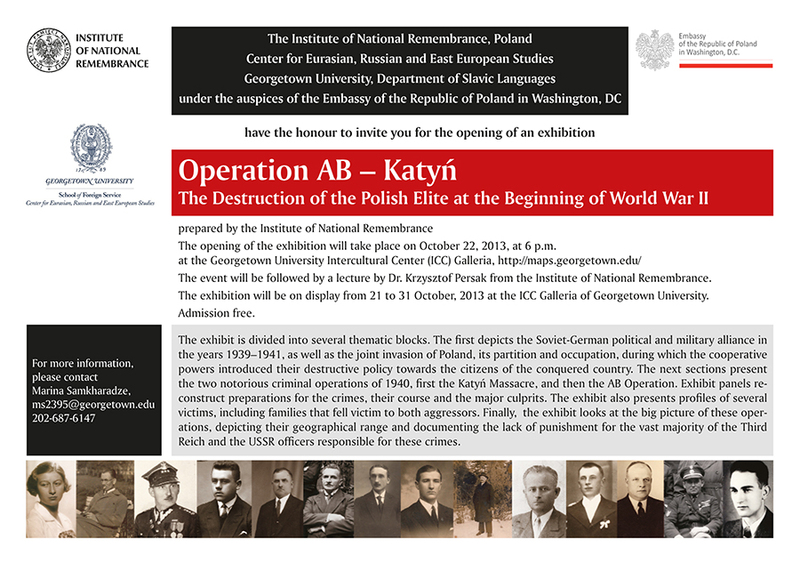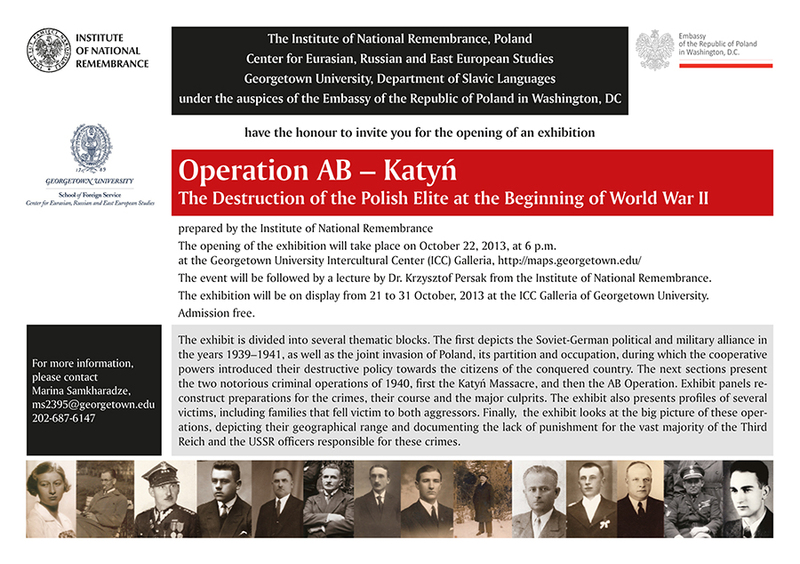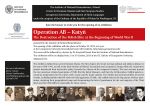| Event Name | “Operation AB – Katyń. The Destruction of the Polish Elite at the Beginning of World War II” exhibition at the Georgetown University in Washington – 21–31 October, 2013 |
| Start Date | 21st Oct 2013 11:03am |
| End Date | 31st Oct 2013 11:03am |
| Duration | 10 days and 1 hour |
| Description | The Institute of National Remembrance and the Center for Eurasian, Russian and East European Studies Georgetown University, Department of Slavic Languages – under the auspices of the Embassy of the Republic of Poland in Washington, DC have the honor to invite you for the opening of an exhibition "Operation AB – Katyń. The Destruction of the Polish Elite at the Beginning of World War II" prepared by the Public Education Office of the Institute of National Remembrance. The opening of the exhibition took place on October 22, 2013 at Georgetown University Intercultural Center (ICC) Galleria. It was followed by a lecture by Dr. Krzysztof Persak from the Institute of National Remembrance. The exhibition is on display from 21 to 31 October, 2013 at the ICC Galleria of Georgetown University. Admission free. For more information, please contact Marina Samkharadze, ms2395@georgetown.edu, 202-687-6147 *** Operation AB – Katyń. The Destruction of the Polish Elite at the Beginning of World War II The exhibit is divided into several thematic blocks. The first depicts the Soviet-German political and military alliance in the years 1939–1941, as well as the joint invasion of Poland, its partition and occupation, during which the cooperative powers introduced their destructive policy towards the citizens of the conquered country. The next sections present the two notorious criminal operations of 1940, first the Katyń Massacre, and then the AB Operation. Exhibit panels reconstruct preparations for the crimes, their course and the major culprits. The exhibit also presents profiles of several victims, including families that fell victim to both aggressors. Finally, the exhibit looks at the big picture of these operations, depicting their geographical range and documenting the lack of punishment for the vast majority of the Third Reich and the USSR officers responsible for these crimes. |
News
22.10.2013


